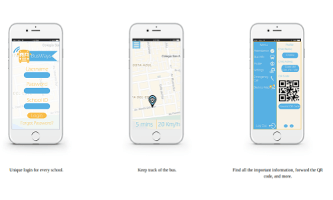We are sure you know what QR Codes are. From product packaging to marketing hoardings, these black-and-white squares are everywhere.
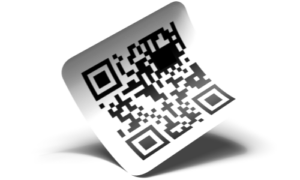
Over the years, QR Codes have become one of the go-to marketing technologies for print marketers. They’re now even being used at airport to clear customs, fight crimes, and even debug apps.
Also Read: How to Use QR Codes – An Epic Guide for Marketers
Besides marketing, QR Codes are popular in industries such as:
QR Code technology is so versatile that using QR Codes for security shouldn’t come as a surprise.
Listed below are two broad use cases of QR Codes for security:
1. Travel Safety Tracking
Globally, approximately 1.3 million people succumb to injuries every year caused by road accidents.
Such incidents worry people about loved ones who step out. What can we do to keep a check and put such concerns to rest?
To address this concern, some organizations have developed tracking apps. With the help of QR Codes, the app allows users to track the whereabouts of their family and friends on-the-go.
Listed below are use cases from two such apps:
A. BusWays
Boston University graduates Pedro Guimaraes and Fernando Nazario co-founded BusWays. BusWays is a QR Code tracking app that allows schools and parents in Panama track the location of the bus and kids.
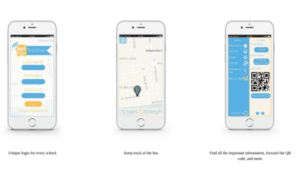
The app provides a unique QR Code tag for each child. Parents can attach these tags to the child’s backpack. Each time the child gets on or off the bus, a school attendant scans the QR Code. Scanning the QR Code will notify the parents of their child’s location via the app.
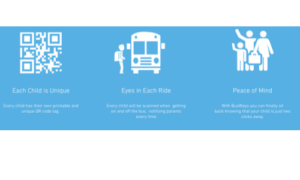
“The security isn’t big there (Latin America). I noticed my mom and other parents would get very worried about the children. My mom would call me all the time asking if my brothers were on the bus with me, where the bus was. I came up with the idea. How can we fix this issue? Why is this happening?” – Pedro Guimaraes, Co-Founder, BusWays.
BusWays gives approved schools access to an admin portal where they can view data on their buses. Using BusWays, schools can view live the bus’ speed and the routes they take. Also, the app allows schools to check the attendance of their passengers.
Also, in May 2017, security number plates were rolled out with QR Codes to curb counterfeiting.
B. Track Me
Safety of passengers using public transport is a concern in India, especially after dark. To ensure passenger safety, Software Technology Park of India has developed the Track Me app.
Track Me app is currently only available in Bengaluru, India.
The app allows passengers to view the driver’s details by scanning a QR Code. Once scanned, the passenger can share the details with their family members.
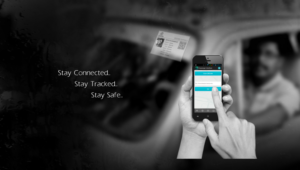
The app covers public transport vehicles such as cab, bus, and autorickshaw. The app also works without an internet connection so that safety is not compromised.
“Our app informs family members right at the start of the trip of the person’s whereabouts and continues to confirm throughout the trip if the passenger is fine or not. The unique pin system ensures that the driver cannot tamper with the app.” – Prasenjeet Pati, Developer, Track Me app.
Besides driver details, the app allows passengers to calculate estimated fare based on distance. Track Me app also provides uninterrupted route tracking.
The app is live on the Google Play Store.
C. Kent CamEye
People who have a chauffeur driven car are always concerned about its safety.
To help them keep an eye on the car and ensure that the driver doesn’t misuse the vehicle, Kent launched Kent CamEye in March 2019.
It is an easy ‘do-it-yourself’ installation that syncs with your smartphone to give you a notification every time your vehicle reaches a destination, exits a location, etc.
2. Identification and Authentication
Identification and authentication or personnel can be a tedious process. QR Codes have now made this process easier.
Here are three use cases on how QR Codes improve identification and authentication:
A. Tencent’s Smart IDs
Tencent, the Chinese internet giant has launched 900 Smart IDs in Nanning, China. A part of their pilot project, the Smart ID is nothing but a unique QR Code.
Tencent developed the Smart IDs in partnership with Nanning’s Public Security Bureau. People can create their Smart IDs via the Tencent app or on WeChat (Tencent’s messaging app).
“It’s pretty cool to have an ID like this. Most people carry a phone with them all day. We can now pay through WeChat, so why not use it as an ID card.” – Zhang Jie, a 23-year-old university student in Nanning
To create a Smart ID the user has to send a photo of their ID card on WeChat or the Tencent app. The user will also have to share a selfie for authentication. Once authenticated, the user will receive a QR Code Smart ID.
“To avoid fraudulent use of the QR code, the code is designed to change every 24 hours” – Li, Head of Technology, Public Security Bureau
Users can currently use the Smart IDs for household registration. Soon, the Smart IDs could also allow users to:
- Open bank accounts
- Book train tickets
- Apply for a driver’s license
- Check-in at hotels
- Clear security checks
Also see how WPA3 offers enhanced security to WiFi users.
B. Educational Documents
1. Question papers
To prevent the leak of class X and XII question papers, CBSE (India) introduced QR Codes on question papers in 2019.
Each subject has multiple sets of question papers wherein the order of questions varies. And each one of these sets carries a QR Code.
This QR Codes can track the origin of the leak and stop its spread.
2. College degree certificates
To curb the menace of fake degree circulation, Mumbai University (MU), adopted QR Codes. QR Codes will now be a part of every MU degree to make the process of authentication easier.

The current authentication process usually takes anywhere between five days to a month. QR Codes will help lessen the time as one would only need to scan the QR Code to authenticate the certificate.
In 2015, APJ Abdul Kalam Technical University, Lucknow also adopted QR Codes for certificates. Also, AIIMS (India) adds QR Codes to medical certificates to curb fake documents.
C. Messaging apps
A lot of messaging apps are now using QR Codes fr authentication. For example:
i. WeChat
WeChat uses WeChat web QR Codes to allow users access their chats on desktop
ii. WhatsApp
Just like WeChat, WhatsApp also uses WhatsApp web QR Codes to let users access their WhatsApp chats on a laptop/PC
iii. Android messages
To help people view their android messages on PC, Google rolled out ‘Android messaged for web’ in 2018
D. Piligrims
Since Hajj 2015 saw a trajic stampede, the Saudi Government issued QR Code ID bracelets to pilgrims in 2016. These QR Codes linked to the pilgrim’s name, nationality, medical history, etc.
Also, in 2018, the Police pf Ramanathapuram—India—decided to launch Online Police Verification service. It will help people get verification reports for various cases online and verify their genuineness too.
Similarly, you can track the attendee or visitors for any other event or place. Many offices, for example, indulge in contactless visitor management. It helps make sure only authorized people are given entry to the premises at a time.
That means effective crowd control and management too. How? This can be easily done by getting people to register in advance to visit the required premises (and you can also cap how many people can register at a given time slot). It’s just like booking tickets.
Once a registration is made, the user receives a digital entry pass on their phone. This can then be scanned by the guards at the office/event premises to verify authorized entry.
The above use cases make it evident how QR Codes have carved a niche for themselves in security. If you looking for ways to make your processes more secure, you too should use QR Codes.
E. Time based access control
Smart mobile access control systems, like those produced by Avigilon, use QR codes to provide guests with temporary access credentials. Rather than issuing costly physical credentials to visitors which could be stolen or misused, a QR code can be sent to the user’s mobile device containing time-based credentials.
This means delivery drivers, hotel guests, gym customers and other similar users can enter specific locations as and when required, with permissions automatically revoked after a set period of time to prevent unauthorised access at a later date.
